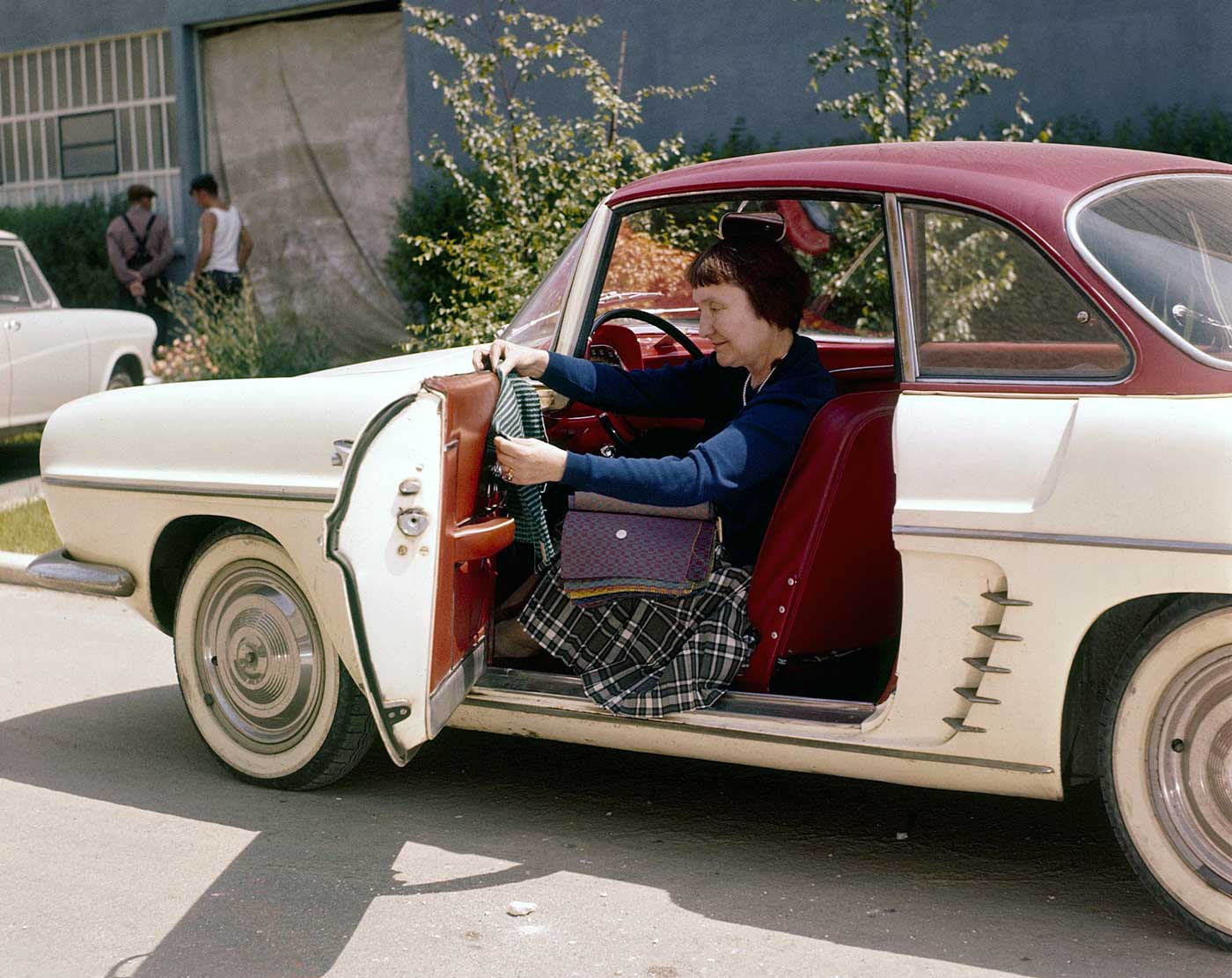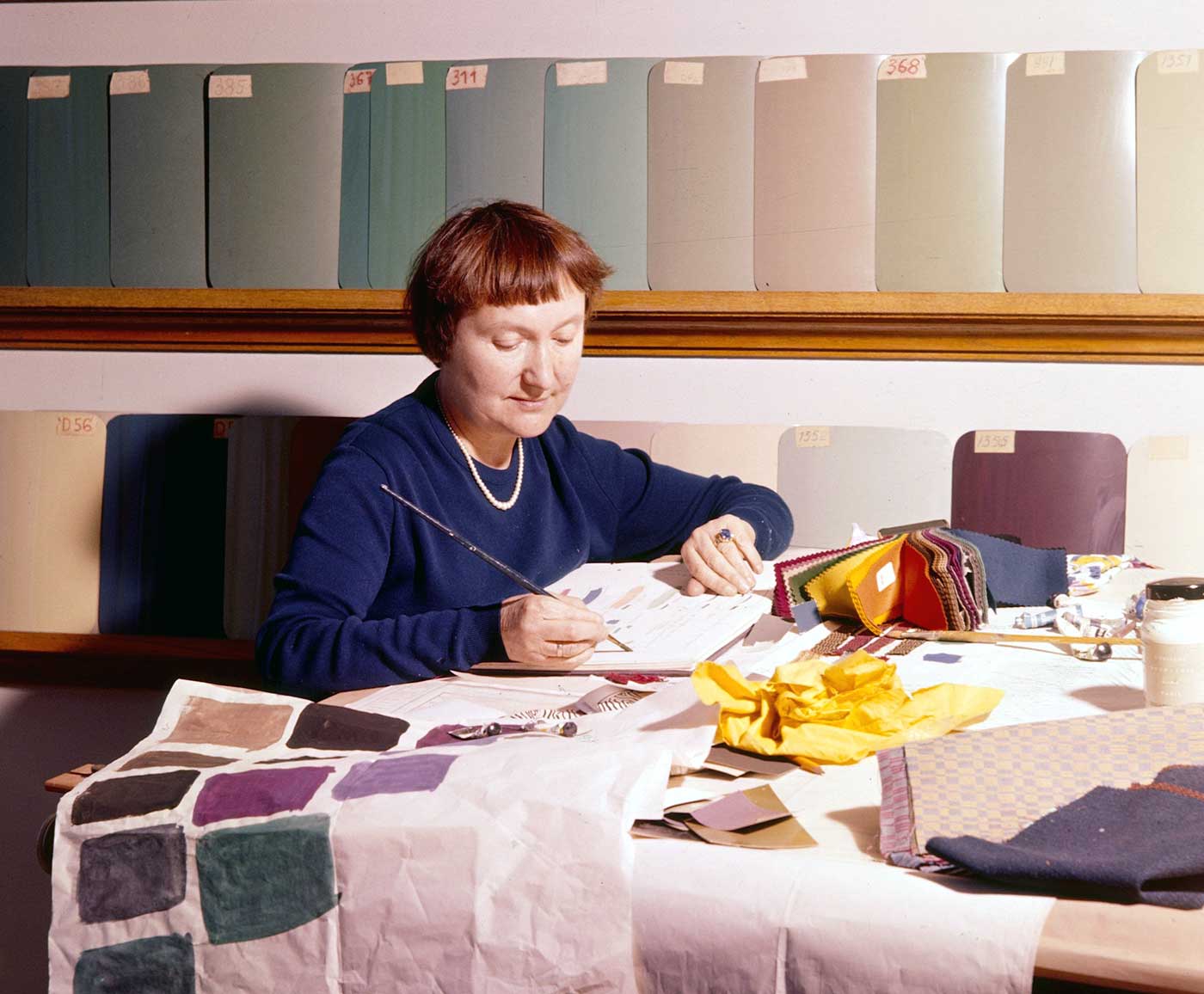By Giles Chapman, from his book, “Three Million Miles in a Volvo and Other Curious Car Stories“
When we received Giles Chapman’s latest book we thoroughly enjoyed the short bios and interesting stories that comprised “Three Million Miles in a Volvo and other Curious Car Stories.” These are just perfect for the VeloceToday format, and here is the fifth in a series.
Paintwork colour, at least for those not commissioning a bespoke car, seemed of little consequence to the car industry in the 1930s. Which was surprising, because General Motors established its Art & Color Section as long ago as 1928, with the forceful Harley Earl as its overlord. Engineer colleagues often derided its work – some called the staff there the ‘pretty picture boys’ working in ‘the beauty parlor’ – and in 1937 the name was changed to the Styling Section.
Although Earl widened colour choice from the sombre and near-universal black, the alternatives were generally limited to such sober hues as maroon, dark green, brown or blue, with only cream, fawn or grey for light relief. General Motors’s rivals were little brighter, and after the Second World War, the palette offered by mass-producers was as gloomy as the prevailing mood of austerity.
It was a point that GM president Charles Wilson, visiting Renault in France in 1950, barked at its chairman Pierre Lefaucheux. And it stung. A year later, when Lefaucheux and his team began planning a new small car, the exchange came back to him. Renault had taken the novel step of using market research to formulate what would become the Dauphine; one key finding was about women’s influence on buying decisions. The clipboard jockeys concluded that ladies tended to have stronger views on colour than their menfolk.
Entirely coincidentally, Lefaucheux had recently received a provocative letter from a fabric designer called Paule Marrot saying how dreary she found the colours of cars on Paris streets, and suggesting she could make a difference. So by 1953, a place had been created for her within the Dauphine development team – a unique position in the car industry, where she was in charge of co-ordinating body colours and interior trim.
Marrot cut a truly Bohemian character in the steely world of car-making. Born in 1902 in Bordeaux, her parents were musicians, and the family moved to Paris when she was four. Drawing was her passion. At 14, she enrolled at L’Ecole Des Arts Decoratifs in Paris where her teachers included Renoir’s cousin Eugene Morand.
Rather then university, the talented 17-year old painter and printmaker opted for an apprenticeship in engraving and textile-printing with artist Pierre-Léon Dusouchet. Art Deco was the prevailing trend in the 1920s, though Marrot’s work was more influenced by symbolist painters like Maurice Denis. She made her living by teaching and selling textile designs, one of which, produced using linocuts, clinched the prestigious Prix Blumenthal award at the Salon des Artistes Decorateurs in 1928. Marrot married her childhood friend Paul Angelloz in 1924, and afterwards he helped expand her reputation by becoming her business manager.
Her acclaim really soared after working with leading fashion designer Paul Poiret. But her longest lasting collaboration was with Alsace textile mill Steiner de Ribeauville, and its director Jean Schlumberger. This began in 1932 and lasted for 31 years and more than 320 different designs for fabrics and table linen. Having Margaret Owen representing her in New York led to a Paule Marrot design for an entire living room for Jackie Kennedy, based around her Les Tulipes design. The pretty, graphic patterns are, perhaps, not what adorns most man-caves, but her mid 20th century influence was truly global.
During her stint at Renault, Marrot selected a palette for the Dauphine bursting with uplifting pastels that put paid to Renault’s customarily drab options. The vivid colour cards handed out by dealers offered such vibrant terms as Rouge Montijo, Jaune Bahamas, Bleu Hoggar and Blanc Réja. They were mixed with complementary interior fabrics for seats and door panels, often sourced from textile mills she investigated in and around Paris. She even designed the Dauphine’s emblem, featuring three dolphins leaping over a crown.
Just as important, from an industrial viewpoint, Marrot’s four-strong team set up test labs for Renault that could measure projected wear to fabrics and analyse paintwork for long-lasting lustre. The Dauphine was lauded everywhere for its pretty lines and attractive package (one was presented as a gift to Queen Elizabeth), even though its rear-engined layout could make it a handful for drivers of either sex.
Marrot’s approach was widely copied across the European car industry. She forever changed the way carmakers regarded paint colours, or at least until Germany’s sleek, scowling silver exerted its firm monotony on everyday models.
After her brief, brilliant dalliance with the car world ended in 1965, Paule Marrot returned to fabric patterns, collaborating with artistic luminaries such as Fauvist painter Rasul Dufy. She died in 1987. Marrot’s much-admired work lives on through reissues, and periodically billows in and out of fashion with exhibitions and retrospectives, and unexpected homages paid by modern brands, including Nike. You may never want to own a Renault Dauphine. But thanks to Paule Marrot’s influence, you’ll at least see it in a dazzling new light.


great piece, this is why Velocetoday is such a good read and interesting to boot, i remember our doctor had a Renault Dauphine it was a real novelty in london 1960’s our doctor was a lady a wonderful women.